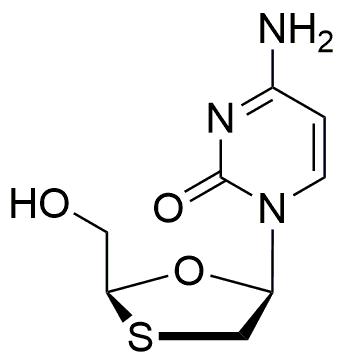Lamivudine is widely utilized in research focused on:
- Antiviral Therapy: Primarily used in the treatment of HIV/AIDS, Lamivudine helps to suppress viral replication, improving patient outcomes and quality of life.
- Hepatitis B Treatment: It is effective in managing chronic Hepatitis B infections, reducing liver inflammation and preventing disease progression.
- Combination Therapy: Often combined with other antiretroviral drugs, it enhances the efficacy of treatment regimens, making it a cornerstone in HIV therapy.
- Research on Drug Resistance: Lamivudine is a key compound in studies aimed at understanding and overcoming drug resistance in viral infections, providing insights for developing more effective treatments.
- Pharmaceutical Development: Its properties are explored in the development of new formulations and delivery methods, aiming to improve patient adherence and therapeutic outcomes.
General Information
Properties
Safety and Regulations
Applications
Lamivudine is widely utilized in research focused on:
- Antiviral Therapy: Primarily used in the treatment of HIV/AIDS, Lamivudine helps to suppress viral replication, improving patient outcomes and quality of life.
- Hepatitis B Treatment: It is effective in managing chronic Hepatitis B infections, reducing liver inflammation and preventing disease progression.
- Combination Therapy: Often combined with other antiretroviral drugs, it enhances the efficacy of treatment regimens, making it a cornerstone in HIV therapy.
- Research on Drug Resistance: Lamivudine is a key compound in studies aimed at understanding and overcoming drug resistance in viral infections, providing insights for developing more effective treatments.
- Pharmaceutical Development: Its properties are explored in the development of new formulations and delivery methods, aiming to improve patient adherence and therapeutic outcomes.
Documents
Safety Data Sheets (SDS)
The SDS provides comprehensive safety information on handling, storage, and disposal of the product.
Product Specification (PS)
The PS provides a comprehensive breakdown of the product’s properties, including chemical composition, physical state, purity, and storage requirements. It also details acceptable quality ranges and the product's intended applications.
Certificates of Analysis (COA)
Search for Certificates of Analysis (COA) by entering the products Lot Number. Lot and Batch Numbers can be found on a product’s label following the words ‘Lot’ or ‘Batch’.
*Catalog Number
*Lot Number
Certificates Of Origin (COO)
This COO confirms the country where the product was manufactured, and also details the materials and components used in it and whether it is derived from natural, synthetic, or other specific sources. This certificate may be required for customs, trade, and regulatory compliance.
*Catalog Number
*Lot Number
Safety Data Sheets (SDS)
The SDS provides comprehensive safety information on handling, storage, and disposal of the product.
DownloadProduct Specification (PS)
The PS provides a comprehensive breakdown of the product’s properties, including chemical composition, physical state, purity, and storage requirements. It also details acceptable quality ranges and the product's intended applications.
DownloadCertificates of Analysis (COA)
Search for Certificates of Analysis (COA) by entering the products Lot Number. Lot and Batch Numbers can be found on a product’s label following the words ‘Lot’ or ‘Batch’.
*Catalog Number
*Lot Number
Certificates Of Origin (COO)
This COO confirms the country where the product was manufactured, and also details the materials and components used in it and whether it is derived from natural, synthetic, or other specific sources. This certificate may be required for customs, trade, and regulatory compliance.


